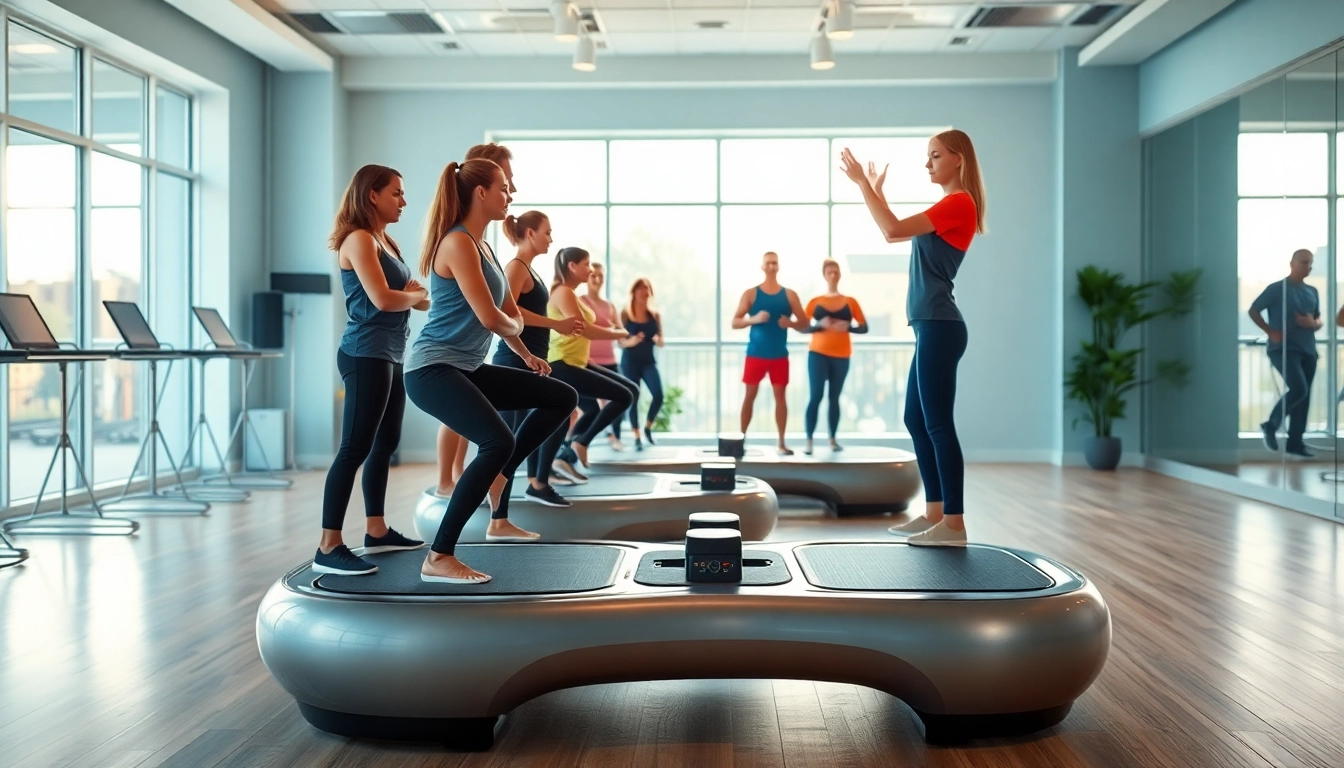Understanding Whole Body Vibration Therapy
Definition and Mechanism of Action
Whole body vibration therapy is a form of exercise where a person stands, sits, or lies on a machine with a vibrating platform. As the machine vibrates, it transmits energy to the body, which forces the muscles to contract and relax rapidly. This process not only engages various muscle groups but also promotes increased circulation, making it a relatively simple form of physical activity that can be particularly beneficial for individuals who struggle with traditional exercise regimens. The continuous muscle contractions facilitated by the vibrations can lead to enhanced strength and improved physical fitness.
History and Evolution of Vibration Therapy
The roots of vibration therapy can be traced back to ancient civilizations, notably the Greeks and Egyptians, who recognized the health benefits of using vibrations. However, modern applications began in the 19th century, when scientists began exploring the physiological effects of mechanical vibration. Throughout the decades, vibration technology evolved from rudimentary devices to sophisticated machines used in clinical and therapeutic settings. Today, whole body vibration therapy is utilized in various wellness and rehabilitation contexts, leveraging its wide-ranging benefits.
Different Types of Vibration Platforms
The efficacy of whole body vibration therapy largely depends on the type of vibration platform used. There are primarily three types:
- Vertical Vibration Platforms: These platforms produce vibrations that move vertically. They are commonly used in fitness settings and can be highly effective for improving muscle strength and flexibility.
- Critical Frequency Vibration Platforms: These machines emit vibrations at a frequency that targets specific muscle groups more effectively, often resulting in a more tailored workout for users.
- Oscillating Vibration Platforms: These produce side-to-side motion, engaging the body’s stabilization muscles and helping to improve balance and coordination.
Physiological Benefits of Whole Body Vibration Therapy
Muscle Strength and Endurance Improvement
One of the primary benefits of whole body vibration therapy is the improvement of muscle strength and endurance. Research indicates that consistent use can significantly enhance muscular performance, particularly in older adults who may find traditional strength training challenging. The rapid contractions induced by the vibrations not only stimulate muscle fibers but also promote greater power output and flexibility. Notably, studies show that those who incorporate this therapy into their fitness routines often see enhanced athletic performance and improved recovery times.
Cardiovascular Health Enhancements
The cardiovascular benefits of whole body vibration therapy are gradually emerging, with several studies highlighting its potential to improve circulation and heart health. Regular exposure to vibrations has been shown to enhance endothelial function, leading to better blood flow and reduced arterial stiffness. Additionally, it aids in the reduction of blood pressure among certain populations, making it a valuable tool in cardiovascular health maintenance.
Benefits for Bone Density and Balance
Research indicates that whole body vibration therapy can positively impact bone density, a crucial factor in the prevention of osteoporosis, particularly among aging populations. The mechanical vibrations stimulate osteoblastic activity, promoting new bone formation. Furthermore, the use of vibration therapy has been linked with enhanced balance and coordination, reducing the risk of falls in older adults. These benefits make it an appealing option for individuals seeking to maintain strong, healthy bones and improve stability.
Whole Body Vibration Therapy for Pain Management
Mechanisms Behind Pain Relief
Whole body vibration therapy has gained traction as an innovative approach to pain management. The mechanism by which it alleviates pain revolves around the stimulation of the body’s natural healing processes. By increasing circulation and promoting muscle relaxation, this therapy can help manage chronic pain conditions, such as arthritis and fibromyalgia. Additionally, it facilitates the release of endorphins, the body’s natural pain-relief hormones, further contributing to its efficacy in pain relief.
Case Studies and Success Stories
Numerous case studies document the positive outcomes associated with whole body vibration therapy. Patients suffering from chronic conditions who incorporated vibration therapy into their treatment plans reported significant reductions in pain levels and improved mobility. For instance, one case highlighted a 60-year-old individual with knee osteoarthritis who experienced less pain and increased functional ability after consistent vibration therapy sessions, underscoring its potential as a complementary treatment option.
Comparison with Traditional Pain Management
When juxtaposed with traditional pain management strategies, whole body vibration therapy offers a non-invasive, drug-free alternative. Unlike pharmaceuticals, which can come with side effects and addiction risks, this form of therapy emphasizes natural methodologies. It can be seamlessly integrated into existing treatment plans, providing multifaceted benefits without adverse side effects commonly associated with conventional pain management techniques.
Integrating Whole Body Vibration Therapy into Your Routine
Dos and Don’ts for Users
Integrating whole body vibration therapy into a wellness routine requires awareness of critical dos and don’ts:
- Do: Consult with a healthcare provider before starting to ensure it’s appropriate for your health needs.
- Do: Begin with short sessions to gauge how your body responds, gradually increasing duration as tolerated.
- Don’t: Overexert yourself; aim for moderate stimulation rather than extreme vibrations.
- Don’t: Use vibration therapy if you have conditions such as blood clots, acute infections, or pregnancy unless advised by a doctor.
Best Practices for Safety and Effectiveness
To maximize the benefits of whole body vibration therapy while ensuring safety, consider these best practices:
- Engage in stabilization exercises while on the platform to enhance core strength and balance.
- Incorporate deep breathing techniques to relax the body further during sessions, promoting overall wellness.
- Maintain proper body alignment on the platform to prevent undue strain or discomfort.
Frequency and Duration Recommendations
For optimal results, frequency, and duration should be tailored to the individual’s health status and fitness goals. Generally, sessions lasting between 15 to 30 minutes, two to three times a week, are recommended. Users interested in muscle toning or increased flexibility may benefit from more frequent sessions, while those primarily targeting pain management or recovery might stick to a lighter schedule. As with any fitness regimen, attentiveness to how the body responds will guide frequency adjustments.
The Future of Whole Body Vibration Therapy
Emerging Research and Trends
Research into whole body vibration therapy is expanding rapidly, reflecting its growing recognition among health professionals. New studies are exploring its efficacy for various conditions ranging from metabolic diseases to mental health disorders. Emerging evidence suggests potential roles in rehabilitation settings, particularly post-surgery or injury recovery phases, as vibrations can expedite healing and restore mobility.
Potential Applications in Rehabilitation and Wellness
The application of whole body vibration therapy in rehabilitation is garnering interest, particularly for patients recovering from surgery, sports injuries, or neurological conditions. Its ability to stimulate muscle activity without the exertion required in traditional exercises makes it appealing for those with limited movement capabilities. The practice is being considered a valuable adjunct therapy that can enhance recovery outcomes through improved strength and coordination.
Integrating Technology with Therapy
The integration of technology with whole body vibration therapy presents exciting possibilities. Smart platforms equipped with sensors now allow for customizable vibration settings based on user biomechanics or specific health metrics, providing tailored experiences. Coupled with app-guided workouts and progress tracking, these advancements aim to enhance user engagement and therapeutic outcomes.



